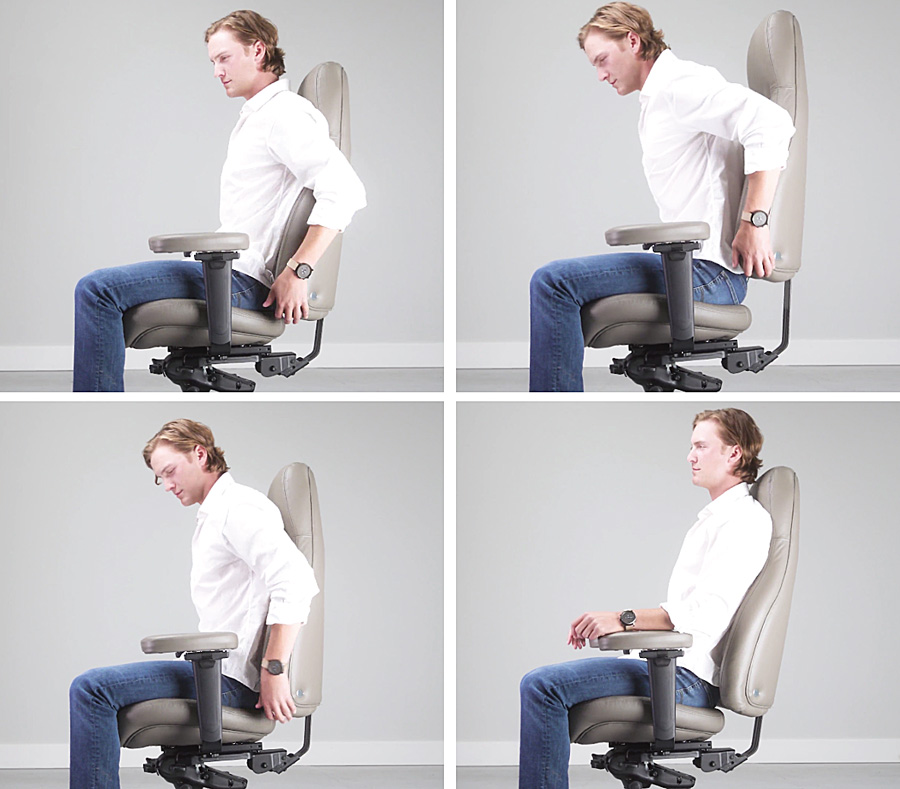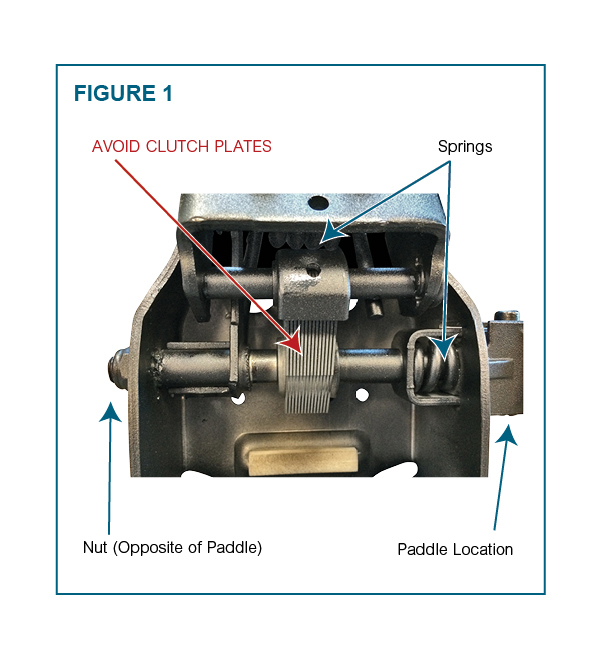TROUBLESHOOTING AND TIPS
TWI
Last Update 4 years ago
With regular care and maintenance, your LIFEFORM® Chair will provide many years of superior performance and satisfaction. To maintain the quality of your LIFEFORM® chair, please follow the guidelines here.
TILT LOCK AND ANGLE TENSION ADJUSTMENT
After years of use, the tilt lock and back angle adjustment paddles may loosen and start to slip. The paddles should have ¼” to ½” of play. To test the play, unlock the paddle and jiggle the end of the paddle. If the paddle has no play or too much play, the clutch plates will slip causing the paddle to snap out of place or fail to lock into place.
To ADD PLAY in the paddle (tighten the clutch), locate the nut securing the paddle bar on the opposite side of the mechanism from the paddle. Use a 5/8” socket wrench to turn CLOCKWISE in ¼” increments. This will increase the play in the paddle and stop the clutch from slipping. Be sure to test the paddle’s play after. Over tightening has the same effect as an under tightened paddle – causing the paddle’s lock to fail and the clutch plates to slip.
To REDUCE PLAY in the paddle (loosen the clutch), locate the nut securing the paddle bar on the opposite side of the mechanism. Use a 5/8” socket wrench to turn COUNTER-CLOCKWISE in ¼” increments. This will decrease the play in the lever and loosen the clutch plates. Be sure to test the paddle’s play after each adjustment. Over tightening has the same effect as an under tightened paddle – causing the paddle’s lock to fail and the clutch plates to slip.
RATCHET BACK HEIGHT ADJUSTMENT
If you are experiencing difficulty in adjusting your Ratchet Back, ensure you are following all of the steps carefully. Often times with the larger, heavier Executive Models it can take a little more effort to ensure the internal mechanism is resetting.
First, to reset the cycle FIRMLY lift the backrest until the maximum height is reached. The internal mechanism will reset and the back will dropdown. FIRMLY press the backrest downwards until you hear a click and the cycle will start over. Lift the backrest upwards to reach the desired height.
If you don’t hear a click when the backrest is pressed downward at the bottom of the cycle – ensure the seat is not impeding the backrest – (using the Seat Slider) you may need to pull the seat forward away from the back until the backrest is set to the desired location. Return the seat to the desired location.

MAINTENANCE INSTRUCTIONS
It should be understood that all products with moving parts will make noise from time to time. Please note that squeaks and creaks are typical of chairs that have not been adjusted or serviced for a long time. To help alleviate the frequency of noises please go through the steps outlined below:
The easiest way to alleviate noise is to systematically move through each moving part and repeatedly adjust it. For example, unlock the tilt lock paddle and rock in the chair for several minutes – this will help move the lubrication along the spring and stop loud squeaks.
It may be that the plastic finger guard (if applicable) on your control has shifted and is now rubbing against the mechanism paddles. Remove the guard and reattach it to stop the clicking.
Lubricate the spring in the control with motorcycle chain lubricant or self penetrating oil. DO NOT USE SOLVENT LUBRICANTS (such as WD-40) AND DO NOT LUBRICATE THE CLUTCH PLATES (see Figure 1). Sometimes new chairs need time to break in so wait a few days to see if the noises disappear.
Check/Tighten bolts attaching the seat and back to the mechanism.
Gas lifts will squeak if left idle for extended periods of time. Lifting and lowering your chair, and rotating in your chair a few times will eliminate these squeaks.
Check casters and remove any carpet lint, dust or grime. Check the bottom of the casters for flat spots. This can occur on chairs that are rarely moved. Replace casters if necessary.
Using carpet casters on a plastic chair mat will generate noise. This can easily be corrected by using soft wheel casters instead.

